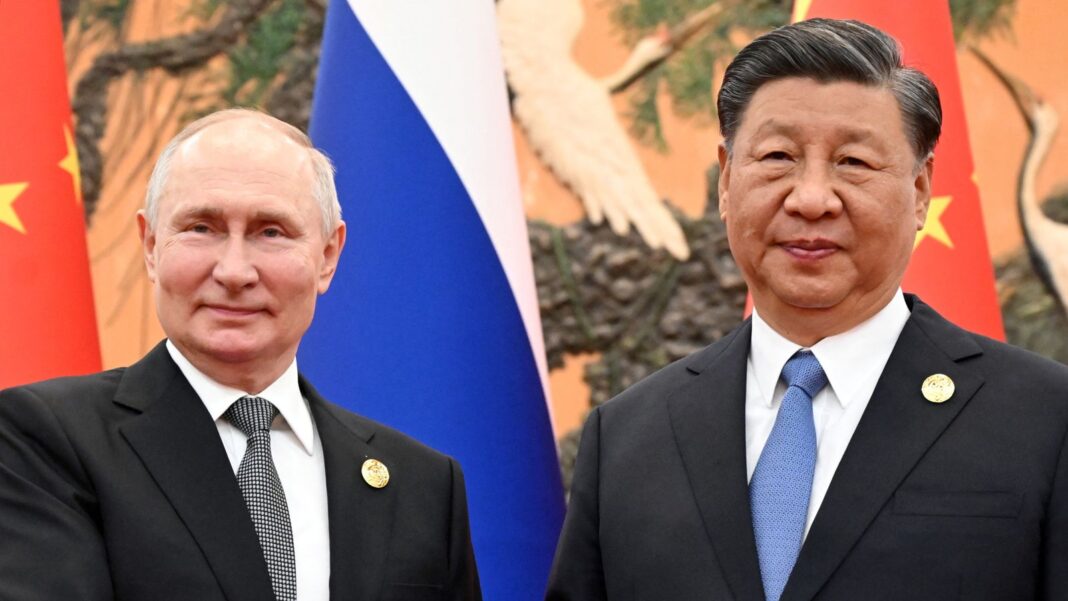As President Putin holds talks with President Xi in Beijing on Thursday, the trading relationship between their two countries will feature prominently.
China does not supply weapons to Russia, but it does send huge quantities of other goods, which Russia uses to fuel its war with Ukraine.
These include things like semiconductor chips, navigation equipment, jet parts, ball bearings and much more.
Such items are considered “dual-use”, because they can also be imported for civilian purposes, often meaning sanctions are less effective in blocking their passage to Russia.
The Center for Strategic and International Studies, a US thinktank, has collected data revealing the scale of China’s exports of “dual-use” goods to its neighbour.
In its research, the CSIS groups together an array of Russian imports under the term “key military goods”, which range from electrical equipment, machinery, and vehicles, to materials like iron, steel, plastic and rubber.
In the early part of 2023, Russia was preparing for a Ukrainian counteroffensive. Imports of so-called “key military goods” rocketed around that time.
Something else happened in March 2023 also – President Xi paid a state visit to Russia.
When you break down the imports by country, it’s clear China is the largest single exporter.
Another significant chunk of the imports is traceable to shell companies located in more Russia-friendly nations in the Asia Pacific and Middle East.

The same data, plotted cumulatively for the period between March 2022 – the early days of the war in Ukraine — to July 2023, shows China way out ahead for transactions of “key military goods”. Hong Kong is second.
As the war has drawn on and some of the most high-tech equipment has been lost on the battlefield, Russia has come to rely significantly on lower-grade equipment, more likely to come from dual-use suppliers.
The movement of these kinds of goods is harder to restrict, which explains why goods from EU nations like France and Germany still find their way through to Russia.
Overall, though, China is clearly the driving force.
Read more from Sky News:
Slovak prime minister shot and in ‘life-threatening condition’
Interpol red notice issued for fugitive gangster ‘The Fly’
‘Super fluffy’ candy floss planet bigger than Jupiter discovered
As he visited Beijing last month, US secretary of state Antony Blinken threatened greater action to clamp down on these kinds of supply chains.
It is expected Chinese banks facilitating such transactions could soon fall victim to US sanctions.
China is keen to portray itself as a peacemaker, but the West’s attempts to convince Mr Xi to use his leverage over Mr Putin to push for a recalculation on Ukraine have, so far, proven futile.
Closer ties with Russia have huge benefits for China too: in 2023, Russia overtook Saudi Arabia to become China’s top supplier of crude oil.
With Mr Putin and Mr Xi’s bonhomie on show in Beijing again this week, their mutually beneficial trading relations could yet scale new heights.
SOURCE: Center for Strategic and International Studies (CSIS) “Back in Stock? The State of Russia’s Defense Industry after Two Years of the War” by Maria Snegovaya, Max Bergmann, Tina Dolbaia, Nick Fenton, and Samuel Bendett







